About this detail of the Tiger
The Tiger had the standard German radio/intercom system of its time. Four of the five crew had headphone/microphone sets, two of them in the turret. Therefore two headset boxes were in the turret.
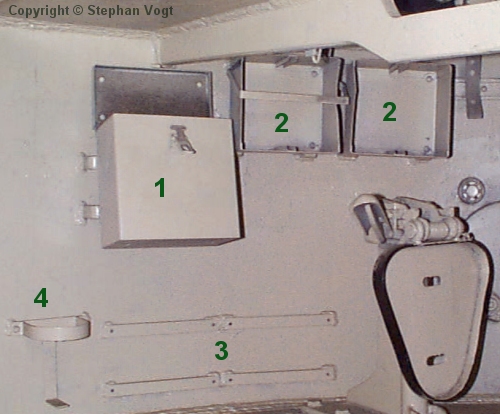
In the Tiger's original design, these boxes were fixed to the rear wall (item 1 in the photo) [1] and the left-hand wall. This one is in Fort Benning's repainted Tiger "712". It's bolted to two metal brackets that space it out from the wall, which is unusual. Compare that to the more typical brackets below it (item 3).
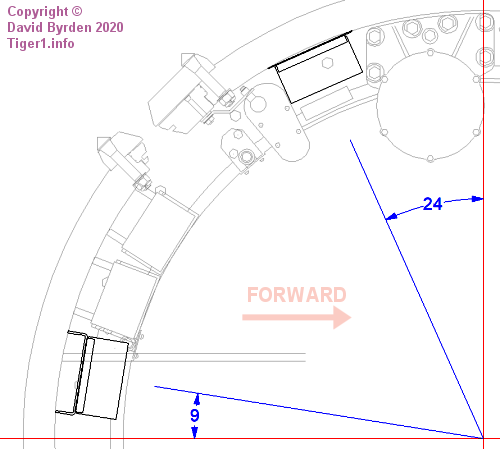
This plan view shows where both of the headset boxes were placed, relative to the turret center. The left-side box is up against the wall in the usual way, fixed to welded metal strips. But the rear box and the adjacent vision block boxes are held 50mm clear of the wall.
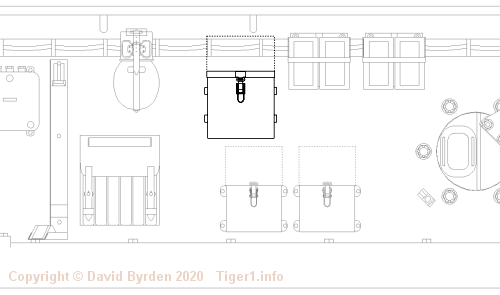
The reason for the 50mm gap is in this diagram of an "unwrapped" turret wall. The Tiger originally had an electrical cable running along the top of the inside wall, drawn here. The opened lid of the rear headset box (outlined) would collide with the cable if the box were flat against the wall.
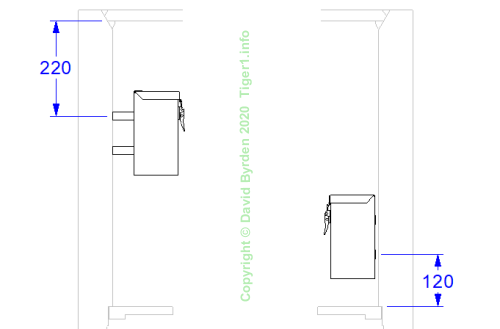
The box on the left-hand wall did not collide with the cable because it was much lower down.
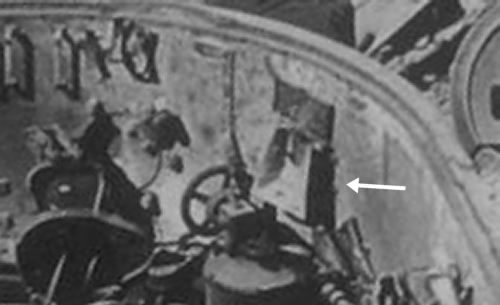
The cable was moved elsewhere at a very early stage of production. The rear box remained in the same place on the same 50mm brackets, but the left-side box was moved. We can see its new position (arrowed) in the wrecked Tiger "833" in Tunisia. Tiger "712" would match this photo if its left wall had not been removed.
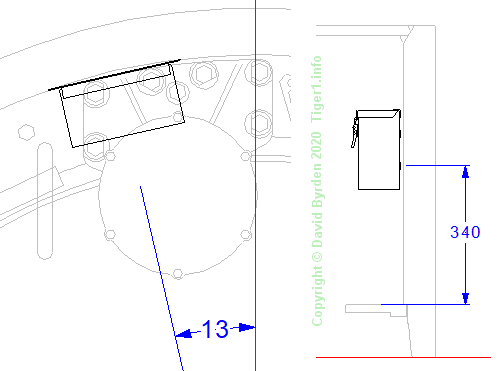
These two diagrams show the new position of the box on the left-side wall. The reason for the move is that a handwheel was added to the traverse gearbox. The wheel is outlined at the extreme left of this diagram, and you can see that the original position of the box was no longer tenable. Refer also to the photo of "833".
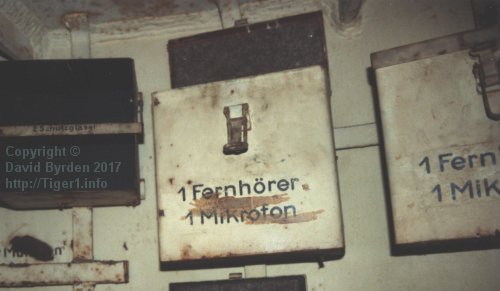
The tank's stowage was redesigned in December 1942 [2] , with the addition of metal frames to hold items clear of the wall for impact protection. The new layout is preserved in Bovington's Tiger "131". Both of the headset boxes were now together, high up on the rear wall [3] .
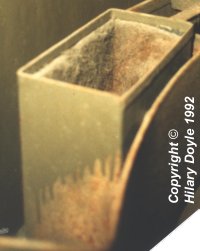
Turret stowage was greatly simplified in late 1943. The headset boxes were without lids from that time forward. They were fixed to the inside of open storage bins that were now present on the turret ring. This example is in the repainted Saumur museum Tiger [4] . Some of its original ivory paint can still be seen.
[1] Survey of Tiger 250031, by Stephan Vogt
[2] DW to Tiger 1
[3] Survey of Tiger 250122, at Bovington museum, by David Byrden